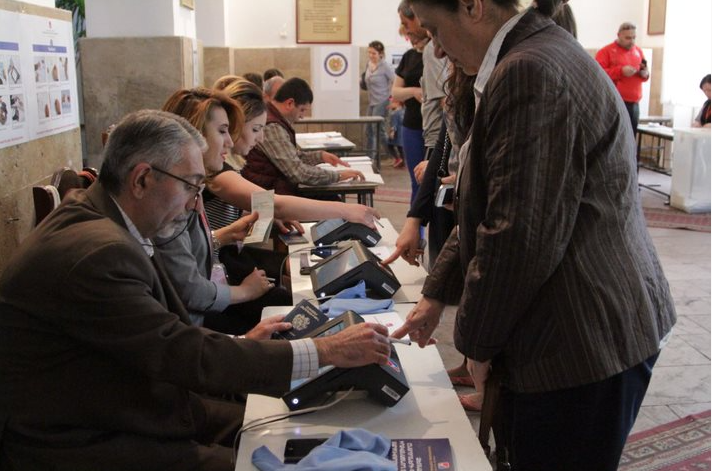
Voter registration and authentication are a common challenge for election officials the world over. Authorities have the obligation to ensure that the integrity of the voter authentication process is not compromised, either by fraud or by malfeasance, and that committing fraud is difficult to do and finding fraud is easy.
Biometrics has been gaining popularity among election management bodies as a means to secure and streamline voter registration and authentication processes. Per IDEA International, biometric technology may lead to significant improvements in election integrity when:
- there are not reliable, trusted identification documents that can be used for voter registration;
- there is a need to issue voter ID cards;
- multiple registration is a major problem and/or when multiple registration cannot be reliably detected based on biographical data;
- multiple voting and voter identification at polling stations are major problems;
- photos or other biometric features are required on voter lists at polling stations, where it is difficult to establish the identity of citizens based on reliable identification documents; and
- voter registers cannot be extracted from reliable and trusted civic or population registers.
As of 2016, more than 50 countries are using biometrics in elections, including Armenia, Cambodia, Colombia, the Dominican Republic, the Solomon Islands and Zimbabwe. Many of the user countries are small to midsize and are young democracies. User countries also tend to have centralized election processes and a national voting authority, which makes implementation easier.
Albania is a good example. It became a democratic country in the 1990s. With an eye toward joining the EU, Albania deployed electronic voting and biometrics to continue improving the integrity of its elections. In 2020, authorities finished amending the country’s legal framework to enable biometric voter verification. In its 2021, the election commission rolled out about 5,000 biometric units for voter authentication. Azay Guliyev, special coordinator of the OSCE/ODIHR Election Observation Mission in Albania, said that authentication system reduced the risk of family voting.
The Electoral Commission of Zambia has worked continuously for more than a decade to update and upgrade its voter database, which includes both biometric and biographic data. The most recent voter registration effort collected 10 fingerprints per voter and facial photographs for all eligible voters in the country. Having fingerprints and facial biometrics allows for a thorough depuration process before each election and thus accurate rolls during voting periods.
Fiji’s biometric Voter Identification Card program has earned so much trust that in 2018 the Ministry of Justice began accepting it for many transactions. These include services provided by the Registrar of Titles Office, the Births, Deaths & Marriages Registry, the Companies Office (which includes the Moneylenders Registry) and the Official Receiver’s Office.
What Biometrics Can’t Fix
In mature democracies, most voter authentication issues at the polls are honest mistakes, clerical errors, data management issues, voter roll hygiene matters, or some combination of these factors. For example, voters signing on the wrong line next to another person’s name in a paper pollbook at their polling site is a common authentication error. Obviously, biometrics can’t fix a problem with a paper pollbook, but replacing paper with an e-Poll book and biometric authentication can eliminate this issue.
In the US, roughly 25% of adult citizens will change their address in a 24-month period. This mobility can affect the accuracy and completeness of voter registration lists. During the 2018 election cycle, more than half of all US voter registration applications were updates to existing records.
There are any number of tools and techniques available to minimize such problems. Online voter registration has been shown to minimize typos and ensures that all relevant details, such as a social security number or driver’s license number, are included in the database.
One of the simplest ways to improve voter authentication is to make government-issued photo IDs free. Indeed, voter identity cards are required in many large democratic countries, including Canada, France, Germany, India, Italy and Sweden. The application and issuance for those IDs should be available at sites such as post offices, libraries and courthouses.
Another simple step toward better voter rolls and authentication is to provide poll workers with comprehensive training and more of it – and to pay poll workers appropriately. A 2018 article in The New York Times reported that roughly 70% of New York City’s newly hired poll workers drop out between recruitment and actually working the polls. The biggest obstacle seems to be the mandatory four-hour training session. Even if they stay through training, up to 15% of poll workers fail to show on Election Day.
Regardless of whether the system is biometric, automated, or entirely manual, smooth voter registration and authentication relies on hardworking, dedicated professionals and attention to detail. Adding biometrics, however, helps free election workers from making judgement calls in gray areas, such as signature matching. It minimizes fraud and opportunities for human error, and ultimately helps build confidence among voters in the election’s integrity.
